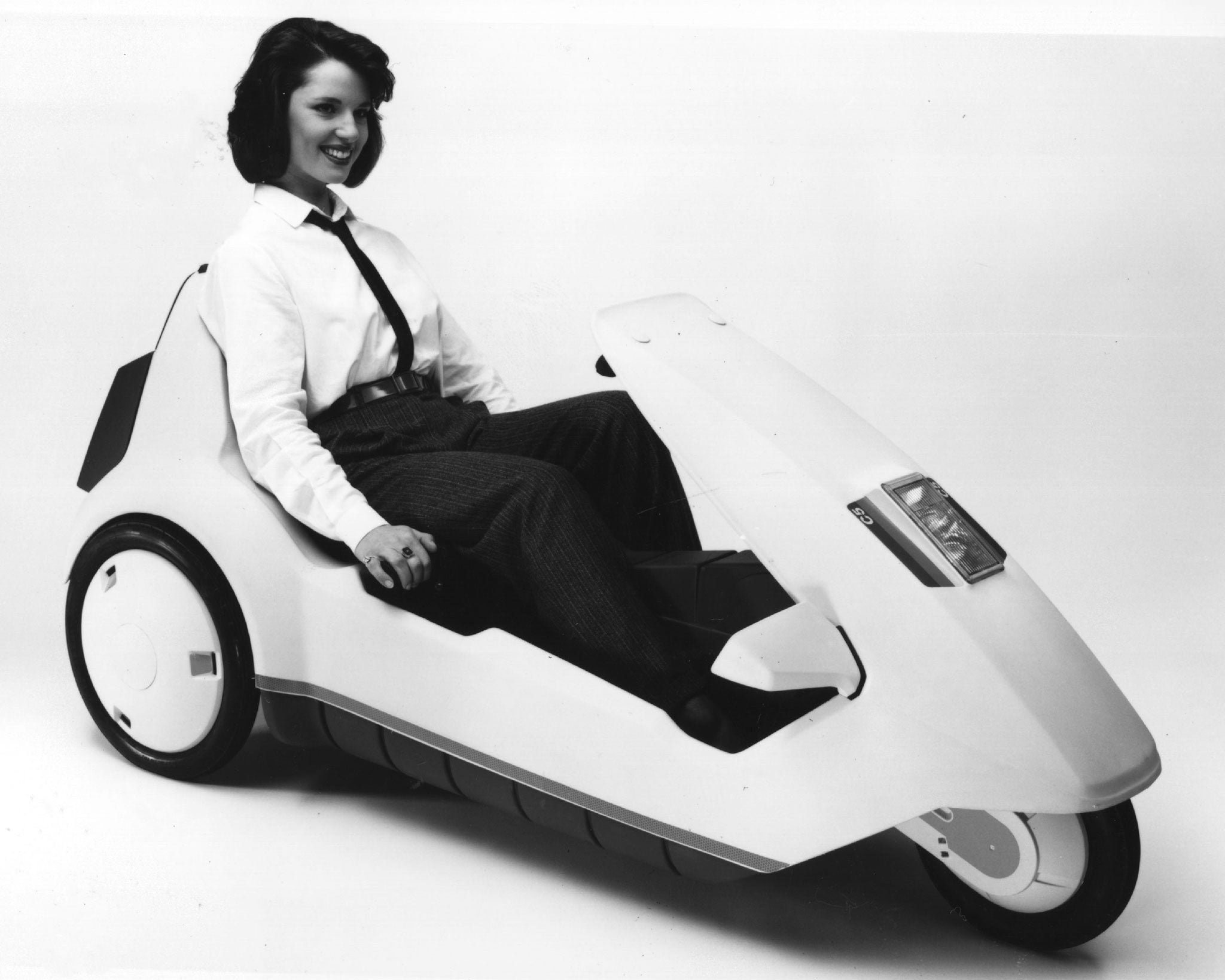Rhodri Marsden's Interesting Objects: The Sinclair C5
Clive Sinclair's electric vehicle was billed as a "revolution in personal transport" but became one of the most famous innovation disasters of all time

* Thirty years ago today at Alexandra Palace, former F1 driver Stirling Moss found himself sitting in a small, unmoving, open-topped vehicle. It was the launch event for the Sinclair C5, a "revolution in personal transport" that was evidently unable to cope with the uphill slopes of north London. Those who'd volunteered to take it for a spin were forced to use pedal power. A reporter from Canada's Globe & Mail witnessed Moss's predicament. "The great man was visibly sweating," he wrote.
* About 18 months previously, Tom King, the Secretary of State for Transport, had introduced the Electrically Assisted Pedal Cycles Regulations 1983. Clive Sinclair saw this as his chance to bring electric vehicles to the masses, but the small print effectively sealed the C5's fate. With a maximum stipulated power of 250W and a maximum weight of 60kg, the C5 was never going to be capable of more than 15mph, and its battery wouldn't propel you further than 20 miles. (On a cold day, according to the AA, it was more like 6.5 miles.)
* The 10 January launch was, according to one observer, "expensive, glossy and mildly embarrassing". The journalists present, knowing that the vehicles were being built at the Hoover factory in Merthyr Tydfil, became faintly obsessed with the idea that it was only as powerful as a domestic appliance, while James Tye of the British Safety Council who had test-driven the C5 four days earlier, loudly expressed his concerns about safety – or, as the Daily Telegraph put it, the "sheer feeling of vulnerability".
* The C5 became one of the most famous innovation disasters of all time. Sinclair predicted that up to 300,000 vehicles would be manufactured each year, but production ceased seven months after its launch. Only 14,000 C5s were ever assembled
@rhodri
Subscribe to Independent Premium to bookmark this article
Want to bookmark your favourite articles and stories to read or reference later? Start your Independent Premium subscription today.

Join our commenting forum
Join thought-provoking conversations, follow other Independent readers and see their replies